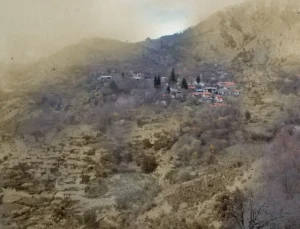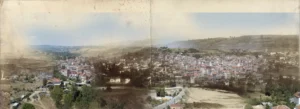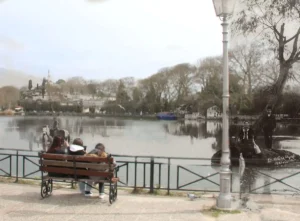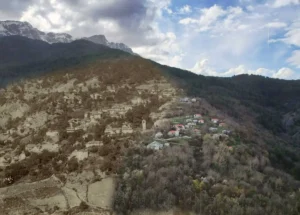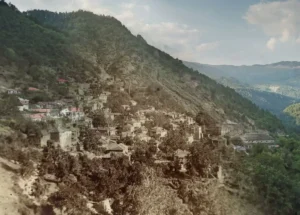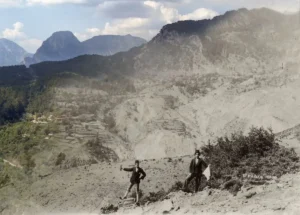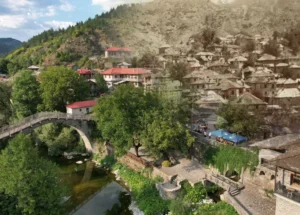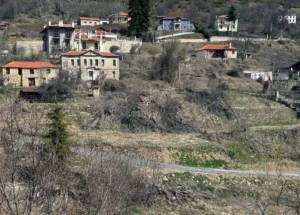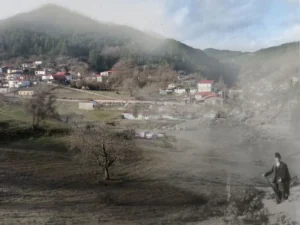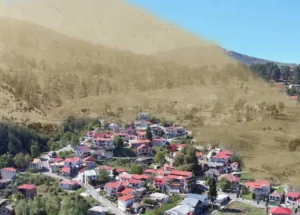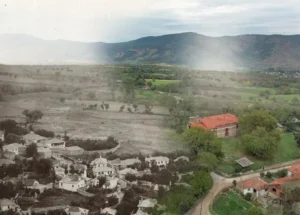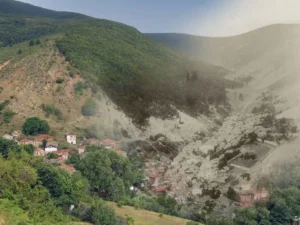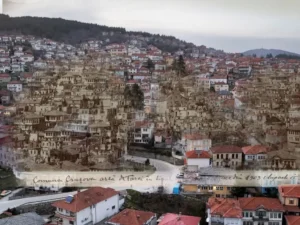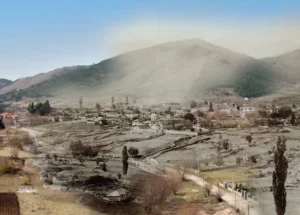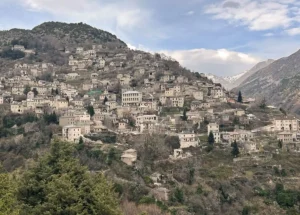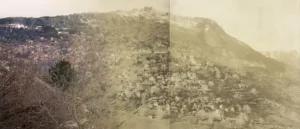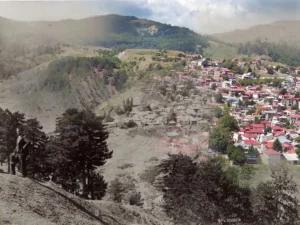Perivoli, according to tradition, was founded some two hundred years ago by the union of three villages: Bithultsi, Karitsa, and Baietan. Like Avdhela and Samarina, it was formerly more prosperous than it is now. It suffered from the rule of Ali Pasha, and the cession of Thessaly made a great difference because a large number of Perivoliats winter in Thessaly. After the cession of Thessaly in 1881, many of these settled permanently in the towns. Trikala, which might be called the Vlach metropolis, contains about two hundred Perivoli families, who go in the summer to a place called Koromilia in the hills above Kalabaka. Thus, it will be seen that the village was once much larger than it is today. One of the great trades of the village was shepherding, and the number of sheep owned by the village increased enormously up to 1877, so much so that the pastureland of Perivoli could carry no more sheep.
The main feature of the village is its misohori, or square, which, like the famous pine tree on the church at Samarina, is the envy of its neighbors. It is a wide terrace, partly natural and partly built up on the sloping hillside, with shops or houses – several stories high – on three sides. The traditional costume of Perivoli is the same as in Samarina, and the national dress is worn more here than in Avdhela. However, the Perivoli style has shorter skirts, with the tsipune and kilted shirt stopping above the knees, making the overall costume less ornate.
Alan J.B. Wace and Maurice S. Thompson, The Nomads of the Balkans



